
 Because Bob and I have been hiking for more than twenty years now, I have always thought that we were careful travelers through places that are home to the creatures of the forest. We don’t leave garbage behind, and we keep our distance when we spot wildlife. It is a show of respect for them, and most often, our distance creates a feeling of careful comfort for the wildlife we pass along the trail. Still, there are times when we inadvertently get a little close. It isn’t because we were careless, but rather that we didn’t see them and I guess they didn’t see us in time either. Most often this occurs with animals like chipmunks, squirrels, mice, or birds, but sometimes deer too. It is times like these that I realize that we are really interlopers in their world. Somehow, that never exactly occurred to me before.
Because Bob and I have been hiking for more than twenty years now, I have always thought that we were careful travelers through places that are home to the creatures of the forest. We don’t leave garbage behind, and we keep our distance when we spot wildlife. It is a show of respect for them, and most often, our distance creates a feeling of careful comfort for the wildlife we pass along the trail. Still, there are times when we inadvertently get a little close. It isn’t because we were careless, but rather that we didn’t see them and I guess they didn’t see us in time either. Most often this occurs with animals like chipmunks, squirrels, mice, or birds, but sometimes deer too. It is times like these that I realize that we are really interlopers in their world. Somehow, that never exactly occurred to me before.
While hiking the Centennial Trail in the area where it crosses the tracks for the 1880 Train, beginning at the Big Pine trailhead, and going to the Samelius trailhead, we came across several Ruffed Grouse. They were in the grass right beside the trail. We didn’t see them, and somehow we managed not to disturb them until we were just steps past them. Suddenly they were spooked by our presence, and we were spooked by theirs. The 
 second they bolted, we were so startled that I tried to get the picture of them, and all I got was the turkey that had been there with them. The picture of the turkey in itself was kind of cool though, because somehow the turkey manage to be behind a small tree at just the right angle to be almost invisible to my camera’s eye. I had to look close to realize that I had caught anything in my shaken state.
second they bolted, we were so startled that I tried to get the picture of them, and all I got was the turkey that had been there with them. The picture of the turkey in itself was kind of cool though, because somehow the turkey manage to be behind a small tree at just the right angle to be almost invisible to my camera’s eye. I had to look close to realize that I had caught anything in my shaken state.
It was then that I began to think about the fact that no matter how careful, or quiet, or respectful we are, we are still interlopers in their world, and it is still disturbing to them to some degree. True, the lone doe eating grass simply stood and watched us, and the bird intent on the worm it was taking back to its babies went about its business, and the mouse eating grass allowed us to pass by quite closely, and the frog sitting in the water puddle decided that he was not going to jump, even if we were very close by. They allowed us to be in close proximity to them, somehow trusting that we were not there to hurt them. Nevertheless, even with their guarded trust, they still felt like we did not belong there. We were still in their world, and they would prefer that we would leave.
This revelation will not change the fact that we like to hike, nor will it keep us from hiking, because hiking is 
 what we do, but it does give me a new respect for the creatures who live along the trails we like to hike. I feel a new desire to somehow tiptoe through their backyard without disturbing them too much. I want to be the stranger that they allow to pass quietly through, even if they take a guarded stance, because I am not there to hurt them, but rather just to take a peek into their world. All we want is to quietly pass through and drink in the beauty that the animals may not notice any more that we do our own living room, because to them it is normal and everyday, but to us it is extraordinary.
what we do, but it does give me a new respect for the creatures who live along the trails we like to hike. I feel a new desire to somehow tiptoe through their backyard without disturbing them too much. I want to be the stranger that they allow to pass quietly through, even if they take a guarded stance, because I am not there to hurt them, but rather just to take a peek into their world. All we want is to quietly pass through and drink in the beauty that the animals may not notice any more that we do our own living room, because to them it is normal and everyday, but to us it is extraordinary.
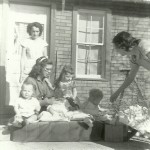 When my Uncle Larry Byer, married the love of his life, Jeanette Morton, she became the first daughter-in-law my grandparents had. They had nine children and of those, just two sons, Larry and Wayne. Larry was the oldest boy, Wayne the youngest boy, with three girls before Larry, and three girls after Wayne, and my mom, Collene Byer Spencer in the middle.
When my Uncle Larry Byer, married the love of his life, Jeanette Morton, she became the first daughter-in-law my grandparents had. They had nine children and of those, just two sons, Larry and Wayne. Larry was the oldest boy, Wayne the youngest boy, with three girls before Larry, and three girls after Wayne, and my mom, Collene Byer Spencer in the middle.
My grandparents were used to girls, with all of their mixed emotions, but prior to Aunt Jeanette, the additions had always been men…husbands for the daughters. I’m not sure, but I have to think that it must have been a little bit of a culture shock to add another girl to this mix. When your family has an over abundance of girls, adding boys seems to calm the whole world down some, because suddenly the emotions of those girls settle down too. I 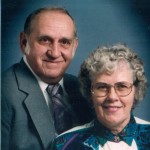 suppose they probably thought that adding a daughter-in-law could possible bring a new surge of emotions, but they couldn’t have been more wrong. Aunt Jeanette has always seemed like a very calm, mellow person to me…with a wonderful laugh that brings a smile to everyone’s face. Of course, I don’t remember a time when I didn’t have an Aunt Jeanette, because she married my Uncle Larry back on February 11, 1956, and I wasn’t born until the following April.
suppose they probably thought that adding a daughter-in-law could possible bring a new surge of emotions, but they couldn’t have been more wrong. Aunt Jeanette has always seemed like a very calm, mellow person to me…with a wonderful laugh that brings a smile to everyone’s face. Of course, I don’t remember a time when I didn’t have an Aunt Jeanette, because she married my Uncle Larry back on February 11, 1956, and I wasn’t born until the following April.
Aunt Jeanette has always been such a kind and thoughtful person. I’m sure that is what attracted her to Uncle Larry too. Aunt Jeanette had been a friend of the family for a while before she and Uncle Larry started dating, and so in many ways, she just fit right in with the rest of the family. Nevertheless, Aunt Jeanette brought a 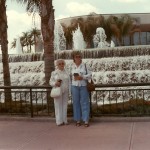 sweetness to the family all her own. She is one of the few people these days who always sends out Christmas cards, because she wants those she loves to know that she is thinking about them. That is just the kind of person she is and always has been.
sweetness to the family all her own. She is one of the few people these days who always sends out Christmas cards, because she wants those she loves to know that she is thinking about them. That is just the kind of person she is and always has been.
Aunt Jeanette has long been the only sister-in-law in the family, but in reality, she is more like a sister than a sister-in-law to the rest of the siblings. She has endeared herself to them in many ways. Her kindness and generosity are well known to anyone who ever had a need. She is quick to offer words of comfort, and just to let you know that no matter what you need, she will be there for you. Today is Aunt Jeanette’s 79th birthday. Happy birthday Aunt Jeanette!! Have a great day!! We love you!!

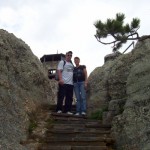 Having been married to my husband, Bob Schulenberg for over 40 years, means that I have lived more of the memories in his life with him, than he has lived without me. The first twenty years of his life is all there is that I didn’t witness, and in reality less than that, because we dated for a little over a year prior our marriage. Of course, I haven’t been with him every minute of the last forty one plus years, but I have been there or heard about most of them. That’s because Bob is my best friend, and I am his. We like to do things together. Of course, with work and other things in life, we can’t be together all the time, but when we are together, we enjoy a friendship that has lasted throughout the years, and will continue for the rest of our lives.
Having been married to my husband, Bob Schulenberg for over 40 years, means that I have lived more of the memories in his life with him, than he has lived without me. The first twenty years of his life is all there is that I didn’t witness, and in reality less than that, because we dated for a little over a year prior our marriage. Of course, I haven’t been with him every minute of the last forty one plus years, but I have been there or heard about most of them. That’s because Bob is my best friend, and I am his. We like to do things together. Of course, with work and other things in life, we can’t be together all the time, but when we are together, we enjoy a friendship that has lasted throughout the years, and will continue for the rest of our lives.
For a number of years now, Bob and I have taken our vacation during the week of his birthday. We love going to the Black Hills and hiking there. I don’t know if everyone would consider hiking to be a great way to relax, but we do. It seems that the tougher the hike, the more worth it the journey is. Our hiking has taken us to many places, in search of the next trail, and we both really think it has enhanced our lives. There is so much beautiful scenery in this country, that cannot be seen from the road. You just have to get out there and walk around on nature to see its true beauty. Our time spent hiking, is I think among the best times of our lives.
While Bob loves his time off, I’m not sure he will take well to retirement when that time comes…at least not in the traditional sense of the word. He will enjoy not having to go to work, but I seriously doubt that he will ever stop working on cars. He loves doing mechanic work, and really it is as much a social time for him as it is a side job. People call him up with questions, or to set up an appointment to have him work on their cars, and in reality, when he is in the garage, he is in his element. I have actually had people apologize to me for taking up his time, but working on cars is what makes him happy, so it’s fine with me…as long as he doesn’t forget to go hiking with me…like that would ever happen.
Bob is such a sweet man, who I have to admit spoils me rotten. In fact, I have to be careful what I ask for, 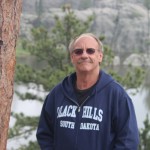
 because he will do his best to get it for me. Now, I know that you will think that is not a bad thing, and I suppose you would be right, but then, I try not let him spoil me too bad…right, I am a woman, so let’s just be honest. Spoiling is good. And, Bob is good at spoiling. It makes for a great combination…for me anyway. Nevertheless, the thing I want most from Bob…is Bob, so it’s all good. He is the love of my life!! In that way, he can spoil me all he wants to. Today is Bob’s birthday. Happy birthday Sweetie. You are the best husband a girl could ever ask for. Have a wonderful day!! I love you with all my heart!!
because he will do his best to get it for me. Now, I know that you will think that is not a bad thing, and I suppose you would be right, but then, I try not let him spoil me too bad…right, I am a woman, so let’s just be honest. Spoiling is good. And, Bob is good at spoiling. It makes for a great combination…for me anyway. Nevertheless, the thing I want most from Bob…is Bob, so it’s all good. He is the love of my life!! In that way, he can spoil me all he wants to. Today is Bob’s birthday. Happy birthday Sweetie. You are the best husband a girl could ever ask for. Have a wonderful day!! I love you with all my heart!!
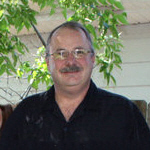 My brother-in-law, Chris Hadlock had been a law enforcement officer since the early to mid-1990s. He started out in the Natrona County Sheriff’s office, and later transferred to the Casper Police Department in 1997. He quickly became one of the up and coming officers. I’m sure that when it came to arrests, his 6’4″ stature didn’t hurt matters any. Most of the people he was about to arrest took one look at him and changed their mind about putting up a fight. I do say most of them. There were a few crazy people who truly thought they could fight their way out of the situation, and manage to get away. Right…rethink that one people. It’s just not going to happen.
My brother-in-law, Chris Hadlock had been a law enforcement officer since the early to mid-1990s. He started out in the Natrona County Sheriff’s office, and later transferred to the Casper Police Department in 1997. He quickly became one of the up and coming officers. I’m sure that when it came to arrests, his 6’4″ stature didn’t hurt matters any. Most of the people he was about to arrest took one look at him and changed their mind about putting up a fight. I do say most of them. There were a few crazy people who truly thought they could fight their way out of the situation, and manage to get away. Right…rethink that one people. It’s just not going to happen.
Over the years Chris’ abilities have been noticed by his superiors, and Chris was encouraged to take the Sergeants exam, which he passed with ease. That promotion put Chris in charge of the officers on his shift. He was the go to person for certain situations that might come up, and the final say during the hours of the shift and on things like who patrols where and such.
This past year has brought Chris to a new place in his career. He took the Lieutenants exam and once again, passed with ease. This promotion put him in charge of investigations. I think this has been one of the most exciting parts of his career. It is an entirely new kind of work, and the perfect challenge for him. Chris likes the workings of this new department and the detectives who are under him. I can understand that, because investigative work is interesting to me too, although I don’t think I could do Chris’ job. It takes a special person to be able to do that work, and that is what my brother-in-law is. He is enjoying this, the next adventure very much.
This past year has also found Chris, and his wife, my sister, Allyn busy remodeling their basement. This is  another type of work that Chris is really good at. His attention to detail, and his ability to see the big picture really serve him well when it comes to carpentry, as many people have seen in the to work he has done for others. Everything from banisters to chain saw carved bears. His artistic talents are evident.
another type of work that Chris is really good at. His attention to detail, and his ability to see the big picture really serve him well when it comes to carpentry, as many people have seen in the to work he has done for others. Everything from banisters to chain saw carved bears. His artistic talents are evident.
This birthday will find Chris and Allyn on vacation in Montana. Allyn thinks Chris is a lot like our dad when it comes to traveling. He loves to get out and pull the trailer behind them and see the countryside. It gives him the chance to relax after a long winter of hard work. I know they will have a great time. Today is Chris’ birthday. Happy birthday Chris!! Have a great day!! We love you!!
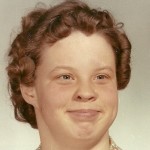 My sister-in-law, Marlyce Schulenberg was developmentally disabled. In many ways that made her always seem younger than her years. In reality, she probably never aged past her teen years, mentally. Still, Marlyce could do some things that adults do, such as cooking and working. In those ways she was much like any grown up person her age.
My sister-in-law, Marlyce Schulenberg was developmentally disabled. In many ways that made her always seem younger than her years. In reality, she probably never aged past her teen years, mentally. Still, Marlyce could do some things that adults do, such as cooking and working. In those ways she was much like any grown up person her age.
Marlyce lived with her parents, my in-laws, Walt and Joann Schulenberg, all her life, but she was a part of a school in Casper at that time, that trained developmentally disabled people to be productive members of society, and then worked to place them in jobs. Marlyce loved her job, and enjoyed going to work every day. It made her feel good about herself, and it made her feel like she was a grownup, like everyone else around her. Marlyce just wanted to belong in the adult world. Something most of us can understand.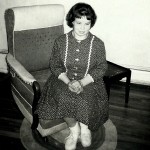
Before Marlyce was forty, she contracted Cancer, and at the young age of just thirty nine years, she lost her life in that battle. It was a devastating loss to all of us, her family, and to all who knew her. Nevertheless, time marches on, and while we will always miss her sweet smiling face, the hats she knitted, and the wonderful chocolate chip cookies she made, we will miss her more than any of those things. Marlyce was the sweetest sister-in-law in the world. She was kind and caring. She loved being an aunt when all the nieces and nephews started coming along.
Her life was sadly, very short in the grand scheme of time, but in that timeframe, Marlyce lived a full life. She was not held back by the limitations that most of us do not consider limitations, like husband and children, but in reality, they are things that must be taken into consideration when deciding whether to read a book, take a trip with parents, or even take a nap. She could, for the most part anyway  make her own choices. And that was what allowed her to live a full life in just a few short years. Nevertheless, we all wish she was still here.
make her own choices. And that was what allowed her to live a full life in just a few short years. Nevertheless, we all wish she was still here.
Today, Marlyce would have turned sixty five. I wonder what she would have been like now. Things would have been a bit more difficult in that her dad is in Heaven, and her mom in a nursing home. I’m not sure where she would have been living. Perhaps with one of her siblings or maybe in a group home. She would be ready to retire, but I’m not sure she would have wanted to do so. It’s all speculation, of course, because we will never know. Today Marlyce would have been sixty five, but in reality, she is forever thirty nine. Happy birthday in Heaven, Marlyce. We love and miss you very much.
 Anyone who knows much about Nazi Germany, knows that Adolf Hitler was insane. His hatred for the Jewish people was nothing less that insanity, because he had no valid reason to hate them. Nevertheless, the Holocaust did happen. Hitler did kill between five and six million Jews during his reign of terror. Many people thought that the Jews were the only target Hitler had too, but that wasn’t so. Hitler wanted to kill anyone who annoyed, inconvenienced, or even remotely bothered him. On this day, July 8, 1943, upon the German army’s invasion of Pskov, 180 miles from Leningrad, Russia, the chief of the German army general staff, General Franz Halder, records in his diary Hitler’s plans for Moscow and Leningrad: “To dispose fully of their population, which otherwise we shall have to feed during the winter.” Hitler planned to level both cities, or at least kill everyone in them, because he didn’t want to have to feed the prisoners during the long winter months! And for no other reason. Most armies at least set up prisoner of war camps, which while not terribly humane, gave some semblance of an attempt to be humane. I know that everyone complains about how the United States treats prisoners of war, but there really is no comparison, when you view the way Hitler and some other terrible dictators treat prisoners of war. Humane treatment is a pipe dream for prisoners of dictators.
Anyone who knows much about Nazi Germany, knows that Adolf Hitler was insane. His hatred for the Jewish people was nothing less that insanity, because he had no valid reason to hate them. Nevertheless, the Holocaust did happen. Hitler did kill between five and six million Jews during his reign of terror. Many people thought that the Jews were the only target Hitler had too, but that wasn’t so. Hitler wanted to kill anyone who annoyed, inconvenienced, or even remotely bothered him. On this day, July 8, 1943, upon the German army’s invasion of Pskov, 180 miles from Leningrad, Russia, the chief of the German army general staff, General Franz Halder, records in his diary Hitler’s plans for Moscow and Leningrad: “To dispose fully of their population, which otherwise we shall have to feed during the winter.” Hitler planned to level both cities, or at least kill everyone in them, because he didn’t want to have to feed the prisoners during the long winter months! And for no other reason. Most armies at least set up prisoner of war camps, which while not terribly humane, gave some semblance of an attempt to be humane. I know that everyone complains about how the United States treats prisoners of war, but there really is no comparison, when you view the way Hitler and some other terrible dictators treat prisoners of war. Humane treatment is a pipe dream for prisoners of dictators.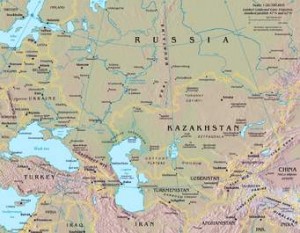
Hitler launched a massive invasion of the Soviet Union on June 22, with over 3 million men. He was highly successful, due in large part to a disorganized and unsuspecting Russian army. By July 8, they had captured 280,000 Soviet prisoners and almost 2,600 tanks were destroyed. The army was already a couple of hundred miles inside Soviet territory. Stalin was in a panic. He was so angry that he began executing generals who had failed to stop the invaders.
Halder, who was Hitler’s chief of staff, had been keeping a diary of the day-to-day decision making process. As time went on, Hitler became emboldened by his successes in Russia. Halder recorded that the “Fuhrer is firmly determined to level Moscow and Leningrad to the ground.” Halder also records the reality of Hitler’s underestimation of the Russian army’s numbers and the bitter fighting within Hitler’s own armies about strategy. Halder and some of the others wanted to make straight for the capital, Moscow. But Hitler wanted to meet up with Field Marshal Wilhelm Leeb’s army group, 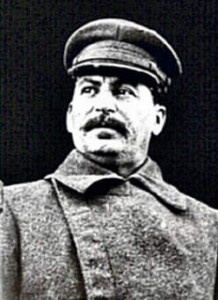 which was making its way toward Leningrad. And Hitler was, after all, in charge. But, the advantage Hitler had against the Soviets would not last very long. Winter was approaching and so was the advantage such conditions would give the Russians. The Russians were used to the severe Russian winters, and Hitler’s men were not. Like Napoleon before them, the Germans would soon find that they weren’t prepared for the Russian winter, and subsequent winters. And yet, Hitler thought he had learned from Napoleon. He ordered his troops to hold their ground. Which meant that during the Winter War, the German army was not able to pull back to more defensible positions. Consequently, the Russians were able to launch a series of counter-attacks during that first winter. These attacks cutoff some German forces, inflicted worse casualties than the Germans could inflict, but more importantly allowed the Russians to rebuild their army. The winter months proved to be just as detrimental for Hitler as they had for Napoleon. He was insane to even try such an attack.
which was making its way toward Leningrad. And Hitler was, after all, in charge. But, the advantage Hitler had against the Soviets would not last very long. Winter was approaching and so was the advantage such conditions would give the Russians. The Russians were used to the severe Russian winters, and Hitler’s men were not. Like Napoleon before them, the Germans would soon find that they weren’t prepared for the Russian winter, and subsequent winters. And yet, Hitler thought he had learned from Napoleon. He ordered his troops to hold their ground. Which meant that during the Winter War, the German army was not able to pull back to more defensible positions. Consequently, the Russians were able to launch a series of counter-attacks during that first winter. These attacks cutoff some German forces, inflicted worse casualties than the Germans could inflict, but more importantly allowed the Russians to rebuild their army. The winter months proved to be just as detrimental for Hitler as they had for Napoleon. He was insane to even try such an attack.
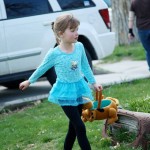 My grand niece Audrianna Masterson is a girl with a lot on her mind. She may not talk much, except around those who know her well. Those people, of course, know about the goofy side of Audrianna. She likes to tease and joke with her siblings and her cousins. She likes to be funny in general.
My grand niece Audrianna Masterson is a girl with a lot on her mind. She may not talk much, except around those who know her well. Those people, of course, know about the goofy side of Audrianna. She likes to tease and joke with her siblings and her cousins. She likes to be funny in general.
Lately, however, I have begun to notice a change in Audrianna, lovingly known to all of us as Anna. Even though she is only just turning eight today, she is starting to become a more girly girl. She always had that tendency, but with a large dose of tomboy mixed in. Lately though, she seems to be getting more, I don’t know, grown up maybe. In many ways, that reminds me of how my granddaughter, Shai Royce was at that age. They have the ability to tease, but they like to be more quiet and reserved too.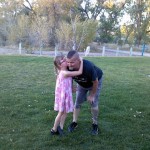
Audrianna, like me, is a thinker. She contemplates the world around her. Some things she is trying to figure out, and other things she knows, but likes to mill over in her head. In fact, Audrianna reminds me so much of myself that it’s uncanny. Being a thinker makes you quiet sometimes, and I suppose it can be misunderstood, but Audrianna knows what I’m talking about. We can be in a room full of people, but we hardly notice it, because we are in our own little thought world. In some ways, it is a difficult place to be, because people misunderstand us sometimes, but in other ways, the thought world in our minds can be an amazing place. We get to spend time in our imaginations, creating things the way we want them to be. I can see that trait in Audrianna. She sometimes is so deep in thought, that you can easily startle her when you talk to her…if she hears you talking to her at all, that is. A deep thinker, might not notice that anyone else is in the room at all.
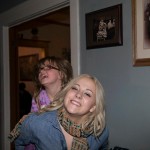
Audrianna is growing into such an amazing girl. I really look forward to seeing who she will become as she gets older. She is such a thoughtful child. And while she likes to tease, I think there is a kindness in her that far exceeds the normal for her age, or any other. I love it when she comes into a room, and immediately comes up to me and gives me a hug. She just makes everyone around her feel the love she has for them, and when she gives you a hug, you know that you are among those people that Audrianna really cares about. It is a blessing that she alone can give, and the receiver always knows that they have been singled out as a special person to Audrianna. Today is Audrianna’s 8th birthday. Happy birthday Anna!! Have a great day!! We love you!!
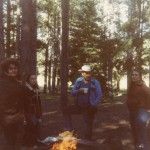
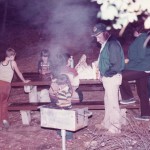 My memories of the Black Hills date back to my childhood, when our parents would take us there. We learned to love the area because of them. Then as adults, we began coming over as a bunch of families. We did everything from the fireworks to shopping to sitting around the campfire at night. I have so many memories of this area, and mom and dad’s echo lives here. It is in the trees, the monuments, and along the roads. I hear them pointing things out to us. They knew all the points of interest. The echo of their words and stories lives on in my mind whenever I’m in the Black Hills, and it doesn’t matter if we are hiking, touring, or in the towns. I can still hear them telling us about the area and their favorite places.
My memories of the Black Hills date back to my childhood, when our parents would take us there. We learned to love the area because of them. Then as adults, we began coming over as a bunch of families. We did everything from the fireworks to shopping to sitting around the campfire at night. I have so many memories of this area, and mom and dad’s echo lives here. It is in the trees, the monuments, and along the roads. I hear them pointing things out to us. They knew all the points of interest. The echo of their words and stories lives on in my mind whenever I’m in the Black Hills, and it doesn’t matter if we are hiking, touring, or in the towns. I can still hear them telling us about the area and their favorite places.
Mom and Dad loved coming here, to the Black Hills, and they spent a lot of time showing us all there was to see. Of course, with the hiking Bob and I do, we have found a few things to see that they have never seen, except when they looked at our many pictures. Nevertheless, we still go and see the things they always loved, and of course, we go to their favorite fireworks display in the world. The fireworks in Custer are amazing, and it’s a display that Bob and I haven’t missed in years either, except the year they were cancelled because the fire danger was too great. Even then, we didn’t mind it, because we would never want fire to destroy such a beautiful area, and having the display then, could have.
While we love coming to the Black Hills, it still felt strange to be here without either of them. I know it was especially hard on my sister, Cheryl Masterson, who always shared a room with them and later with Mom. I think for Cheryl, it felt a little bit like being at loose ends. She was in the place they had stayed for years, but she was there alone. She came over with her kids, so the trip wasn’t alone, but it was just that she was in the 
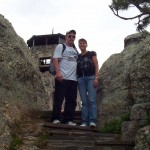 motel room alone. It just felt strange, and empty. In fact, she found it so empty that she chose to stay with her daughter Liz Masterson at her friend’s house the last night. I can certainly understand how she felt, because coming into the Black Hills, I felt exactly the same way. It was more than a little disconcerting. Then, at the fireworks, when all the family that had made the trip were together the subject turned to Mom and Dad. It was bittersweet, because we knew that they would be glad that we came, but we were sad that they couldn’t. A ton of bricks moment for sure…being there without them.
motel room alone. It just felt strange, and empty. In fact, she found it so empty that she chose to stay with her daughter Liz Masterson at her friend’s house the last night. I can certainly understand how she felt, because coming into the Black Hills, I felt exactly the same way. It was more than a little disconcerting. Then, at the fireworks, when all the family that had made the trip were together the subject turned to Mom and Dad. It was bittersweet, because we knew that they would be glad that we came, but we were sad that they couldn’t. A ton of bricks moment for sure…being there without them.
 So often when Bob and I are in the Black Hills, we are out hiking the many trails there. Because of that, I have begun to notice that when we are driving around in the Hills, I seem to always be looking for trails, and when I find one, I begin to wonder about it. Where does it go? How difficult is the hike? What would I see on the trail? Are there streams there to cross? Pretty much it’s the normal questions that come to my mind when I think if hiking. I guess it’s just the trails draw. I like thinking about what is just around the next turn on the path. It gives my imagination a chance to work overtime.
So often when Bob and I are in the Black Hills, we are out hiking the many trails there. Because of that, I have begun to notice that when we are driving around in the Hills, I seem to always be looking for trails, and when I find one, I begin to wonder about it. Where does it go? How difficult is the hike? What would I see on the trail? Are there streams there to cross? Pretty much it’s the normal questions that come to my mind when I think if hiking. I guess it’s just the trails draw. I like thinking about what is just around the next turn on the path. It gives my imagination a chance to work overtime.
The Black Hills has so many trails, that I find myself always in search of a new trail. And finding one is always a possibility. I seriously doubt if we have hiked even half of the many trails that exist there. Nevertheless, we have hiked many of them, and I can tell you that when you are out in the trail hiking…well, there is just nothing like it in the world. You just can’t see many of those sights from the road, but rather from the road all you get is the trail’s draw, telling you to come and have a look. To come and find the peace and quiet that lives there…only on the trail.
As I think about it though, and since I have hiked Harney Peak, my favorite hike, many times, I would have to say that the trail that I find the most intriguing…and the one that will stay that way for some time to come…would have to be the hike up to the Hall of Records, behind the faces of Mount Rushmore. Since it takes 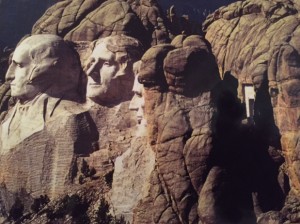 obtaining Congressional approval…an act of Congress…to hike that one, I’m sure it will continue to remain a mystery to me, for a long time, if not the rest of my life. Every time I look at the faces of our presidents carved on Mount Rushmore, I find myself looking to the right, to a spot that could easily be missed if I didn’t know what it was. In many ways, I look at that spot longingly, because I know that up that hill are the stairs that lead to the top, to the secret spot behind the faces, where the Hall of Records has been carved into the granite face of the mountain top, hidden from public view, only to be seen by a very select few…and probably never me, because Congress would have no reason to approve my request. Nevertheless, the trail’s draw on me remains.
obtaining Congressional approval…an act of Congress…to hike that one, I’m sure it will continue to remain a mystery to me, for a long time, if not the rest of my life. Every time I look at the faces of our presidents carved on Mount Rushmore, I find myself looking to the right, to a spot that could easily be missed if I didn’t know what it was. In many ways, I look at that spot longingly, because I know that up that hill are the stairs that lead to the top, to the secret spot behind the faces, where the Hall of Records has been carved into the granite face of the mountain top, hidden from public view, only to be seen by a very select few…and probably never me, because Congress would have no reason to approve my request. Nevertheless, the trail’s draw on me remains.
 With our nation’s Independence Day upon us, I find myself, like many other Americans, in a rather weary and confused state. So much about our country has changed, that it has almost become unrecognizable to me. The United States of America has always been known as the land of the free and the home of the brave, but now it seems that we are becoming the land of the free, only if we agree with what a select few want, and as for the brave, well it’s becoming very much out of style to stand up for our beliefs, values, or even for our country. I’m not picking on any one group here, but rather I find myself feeling quite sad that the sense of pride we have always felt for our nation is suddenly gone…at least in the minds of some people. I know that everyone really has a right to live their life in the way that they want to, but the problem is that lately everyone wants to tell everyone else how to believe. With that in mind, I thought it fitting to remind people about why our ancestors came here in the first place.
With our nation’s Independence Day upon us, I find myself, like many other Americans, in a rather weary and confused state. So much about our country has changed, that it has almost become unrecognizable to me. The United States of America has always been known as the land of the free and the home of the brave, but now it seems that we are becoming the land of the free, only if we agree with what a select few want, and as for the brave, well it’s becoming very much out of style to stand up for our beliefs, values, or even for our country. I’m not picking on any one group here, but rather I find myself feeling quite sad that the sense of pride we have always felt for our nation is suddenly gone…at least in the minds of some people. I know that everyone really has a right to live their life in the way that they want to, but the problem is that lately everyone wants to tell everyone else how to believe. With that in mind, I thought it fitting to remind people about why our ancestors came here in the first place.
When our forefathers left England, it was to get away from a government that made it a treasonous act to separate from the Church of England. The people who did not agree with the teachings of the Church of England had to leave or they would be killed. That was the reason that the First Amendment to our Constitution says, “Congress shall make no law respecting an establishment of religion, or prohibiting the free exercise thereof; or abridging the freedom of speech, or of the press; or the right of the people peaceably to assemble, and to petition the government for a redress of grievances.” These were very important parts of our  Constitution. The problem is that many people have forgotten those rights, or they have mixed up the meaning, thinking that we are not to have anything to do with religion in our government. That isn’t it at all. It says that the government is to stay out of our religious beliefs. That is not what is happening. Our current government is far too invasive in our religions.
Constitution. The problem is that many people have forgotten those rights, or they have mixed up the meaning, thinking that we are not to have anything to do with religion in our government. That isn’t it at all. It says that the government is to stay out of our religious beliefs. That is not what is happening. Our current government is far too invasive in our religions.
As time went on, England tried to usurp more and more authority over the young colonies. They tried to interfere with religion, economics, and politics. Even though we were a nation basically under them, we knew it could not continue much longer. It was decided that we needed to be independent from England. That was when we knew that we could not continue to be under this type of rule. So, why do we celebrate the 4th of July…Independence Day. We think of July 4, 1776, as a day that represents the Declaration of Independence and the birth of the United States of America as an independent nation. But it wasn’t on July 4, 1776 that the Continental Congress decided to declare independence. That was on July 2, 1776. It wasn’t the day we started the American Revolution either. That had happened back in April 1775. And it wasn’t the day Thomas Jefferson wrote the first draft of the Declaration of Independence. He did that in June 1776. It wasn’t even the date on which the Declaration was delivered to Great Britain. That didn’t happen until November 1776. It wasn’t even the date it was signed. That was August 2, 1776.
No, we celebrate the 4th of July, because that was the day that the Continental Congress approved the final 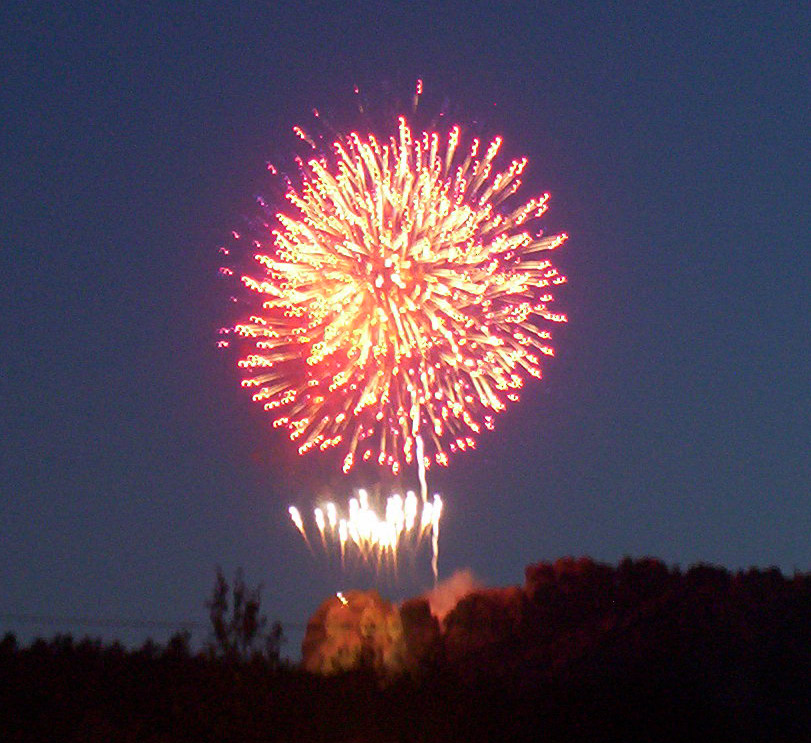 wording of the Declaration of Independence, in 1776. They’d been working on it for a couple of days after the draft was submitted on July 2nd and finally agreed on all of the edits and changes. That was the day that truly represents our Independence. Not the day it was accepted by Britain, but the day we decided to make it our own. That was the day we made freedom and independence our own. It was the day that we decided to live in peace together, with each man, woman, and child having certain rights that should never be denied them. I think some people in our country, and especially our leadership have forgotten that fact in their race to political correctness, anti-racism, and a thinly disguised attempt to control our religious rights.
wording of the Declaration of Independence, in 1776. They’d been working on it for a couple of days after the draft was submitted on July 2nd and finally agreed on all of the edits and changes. That was the day that truly represents our Independence. Not the day it was accepted by Britain, but the day we decided to make it our own. That was the day we made freedom and independence our own. It was the day that we decided to live in peace together, with each man, woman, and child having certain rights that should never be denied them. I think some people in our country, and especially our leadership have forgotten that fact in their race to political correctness, anti-racism, and a thinly disguised attempt to control our religious rights.

